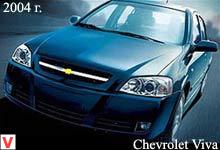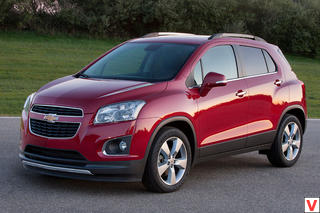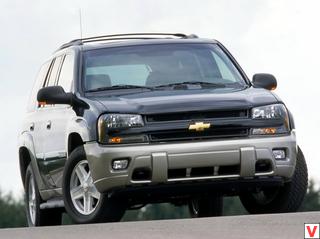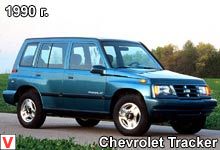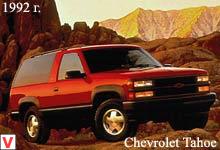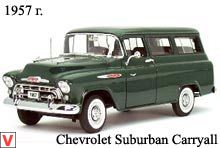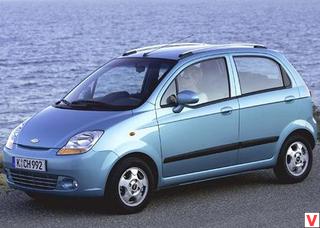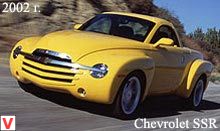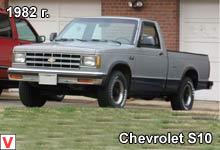
Chevrolet C / K is the name of a series of full-size pickups, which were manufactured under the Chevrolet brand from 1960 to 1998, and under the name of General Motors Corporation (GMC) from 1960 to 1988. The first pickup Chevrolet appeared in 1924. “C” meant the presence of two driving wheels, and the K models had four driving wheels. The lightweight C / K pickups were replaced in 1988 with the GMC Sierra and in 1999 with the Chevrolet Silverado; and much more powerful modifications to the Chevrolet Silverado and GMC Sierra appeared in 2001 with the HD label. Model 1960 was a new style of pickup C / K, which included many innovations.
The most important of them were: a lower center of gravity of the frame, which allowed the cab to be lowered lower and, accordingly, increase stability, and an independent front suspension, which made the pickup ride more similar to the ride in a full-fledged truck. Also a novelty for 1960 was the system for designating pickups made by GM. The markings 3100, 3200, and 3600 are obsolete for designations of models with a load-carrying capacity of less than half a ton, more than half a ton, and 750 kg - respectively. Instead, according to the new scheme, the numbers 10, 20 and 30 were assigned for 1/2, соответственно and 1-ton models, respectively.

From 1957, pickups with 4 driving wheels became available, which was reflected in the marking as the letter C for two-wheel drive and K for four-wheel drive. In fact, the icons on the pickups still carried the previous generation information. A series of 10, 20, and 30 pickups (C or K) was called Apache 10 ... 20 and ...
30, the 40, 50 and 60 series was called "Viking 40" ... 50 and ... 60, and the most powerful pickups of the 70, 80 and 90 were called "Spartan 70" ... 80 and ... 90. Since 1960, C / K pickups have been available in the smooth “Fleetside” version or in the buffered “Stepside” version.

GMC pick-ups differed, respectively, as the “Wideside” and “Fenderside” design. Models with a half-toned capacity, denoted as C10 and K10, had a short wheelbase, and denoted as C15 and K15 - long. There were also available modifications of the C20 and K20 (3/4 tons) and the “plain” C30. GMC did not use the “C” badge, although all-wheel drive versions were designated by the letter “K”. The 1962 model used spring front and reinforced spring rear suspension. Pickups were equipped with engines of the following volumes and capacities: 3.9 liters (135 hp); 4.3 liters, with a direct arrangement of cylinders - 6s (150 hp) and 4.6 liters with a V-shaped arrangement of cylinders V8 (185 hp).
GMC also offered pickups with a 5-liter V8 engine that could develop power from 125 to 142 hp. Reel front suspension began to be used since 1963, along with the new I6 engines of 3.8 liters, 140 hp. and 4.8 liters (165 hp).

Changes in the cab in 1964 touched the windshield, grille and some elements of interior decoration. Air conditioning and V8 engines with a volume of 5.4 liters (220 hp), the manufacturer began to install in 1965. The main since 1966 was the engine I6 of 4.1 liters (155 hp).
A new, more modern look, pick-up acquired in 1967. It was then that General Motors began to market C / K pickups to the market, only as a working vehicle and nothing else. Even ambiguous ads appeared in advertising magazines in 1968, such as the “Chevy pickup created to be engaged in women” - in which the vulgar meanings of the word “pickup” were played up - (something like superficial dating of men with women). Most of the pickups of the 10 and 20 series “Chevrolet” from 1967 to 1972 produced with reinforced spring rear suspension, which significantly improved driving performance compared to traditional sheet shock absorbers.

However, on pickups of the 30th series, only leaf absorbers were available so far. Models produced by GMC were equipped with leaf dampers, and spring existed, as an addition. And all-wheel drive pickups and Chevrolet, and General Motors equipped sheet dampers on both axles. The standard chassis then included a 3-speed manual gearbox and one of two engines: a 6-cylinder with a volume of 4.1 liters or a V8 - with a volume of 4.6 liters.
In addition, the Powerglide and Turbo-Hydromatic four-speed manual gearboxes were available. Additional engine models were the 6-cylinder volume of 4.8 liters, and the V8 - 5.4 liters. The wheels of half-ton pickups were fastened with six bolts of 5.5 inches - each, and for those designed for 750 kg and a whole ton, each wheel was fixed with eight bolts of the standard 6.5 inches. 6 liters. In addition, the Powerglide and Turbo-Hydromatic four-speed manual gearboxes were available. Additional engine models were the 6-cylinder volume of 4.8 liters, and the V8 - 5.4 liters.

The wheels of half-ton pickups were fastened with six bolts of 5.5 inches - each, and for those designed for 750 kg and a whole ton, each wheel was fixed with eight bolts of the standard 6.5 inches. 6 liters. In addition, the Powerglide and Turbo-Hydromatic four-speed manual gearboxes were available. Additional engine models were the 6-cylinder volume of 4.8 liters, and the V8 - 5.4 liters.
The wheels of half-ton pickups were fastened with six bolts of 5.5 inches - each, and for those designed for 750 kg and a whole ton, each wheel was fixed with eight bolts of the standard 6.5 inches. In 1968, a 4.6-liter V8 engine was replaced with a 5-liter counterpart, and the first engine was proposed with 8 v-shaped cylinders of 6.5 liters and a power of 310 hp. External changes of models of 1968 compared with 1967 were reflected in reflectors installed on all buffers, as well as in the elimination of a small window in the rear part of the cab. The radiator grilles from GMC were not changed, but the letters themselves on the horizontal bar began to look larger and sharper.
In addition, when restoring C / K pickups, it is necessary to take into account that the hoods of 1967-68. more "slick" and without the corresponding buffers 1967-68. not suitable for installation on the 1969-72 model. In addition, two types of cabin interior appeared: more and less comfortable, denoted by "CST" (Custom Sport Truck - a traditional sports truck) and "Standart" (standard) - respectively. In 1968, Chevrolet employees celebrated a half-century anniversary, since the release of trucks began under this brand.
In addition, in the same year, a version of a pickup truck with a long body, designed for 750 kg of cargo and included in a set of a reinforced box 2.6 meters long, was added to the model line, which made it more attractive for tourist trips. In 1969, a new 5.8-liter V8 engine was produced with a capacity of 255 hp. Along with the engines, there were also radiator grilles for the Chevrolet brand pickups, as well as more protruding hoods for both Chevrolet and General Motors pickups. Plus, a variant of the model, known as the “K5 Blazer” with a wheelbase shortened to 2,642 m, was presented to the public.
In the same year, the GMC version of the pickup was introduced, which became known as Jimmy. There were also some changes in the equipment of the cabin, the most striking of which was the switching of the control of the parking brake from manual to foot (pedal). There is no need for a switch. The most notable change in the models of 1970 can be called a small modernization of the Chevrolet grille. At first glance, the differences between the grids of 1969 and 1970. no. However, the plastic inserts of 1970 are actually a lighter shade, they visually break the grid into 6 sections. Several changes occurred with pick-ups in 1971.
First, a Chevrolet type “egg tray” type grille appeared, and the “corporate” black color of the elements used at GMC grilles. Secondly, as an additional option, customers were offered a variant of a more comfortable interior, which was called Cheyenne for Chevrolet and General Motors for Sierra. Under these additions, a more comfortable interior, better interior insulation, AM / FM radio, and a two-color interior design were envisaged.
And thirdly, the front brakes were replaced from drum to disc on all “light-spring” modifications of pickups, which was designed to increase the service life of the brakes. In addition, we note that by this year, passenger cars of such brands as Buick, Oldsmobile, Pontiac and Cadillac had already switched to 5-point wheel mounting with bolts of 5 ", and half-toned C / Ks were still completed with the formula 6 x 5.5 '' for each wheel, both with two driving wheels and four. The six-point wheel mount, in fact, remained the standard throughout the production of C / K pickups, including for wagon modifications.
You can also recall only cosmetic replacement of the emblem on certain Chevrolet models - from 396 V8 to 400 V8. The 1972 models were virtually identical to the 1971 models, except for the “moved” rear-view mirror, which was attached not to the top of the cabin, but to the side of the windshield, as well as modifications to the door panels. Flat metal and plastic panels were discontinued, and plastic panels made in a special way and always incorporating armrests were now produced for any cabin equipment. And for complete sets like "Cheyenne" and "Sierra" manufacturers have also provided wood inserts.
In total, the new version of the C / K of 1973 was produced without radical changes for 14 years in two not very different body variants. This version also became the basis for later and cumbersome models like Blazer and Suburban. The “tides”, which in the first C / K models made the body shape slightly puffy at the height of the bonnet, now “drained” to the level of the middle of the headlights and were more pronounced from the sides than from the front of the body. Designers have increased the length of the wheelbase to 2.985 m in short-length versions, and to 3.34 m in long-frame.
A variant of the super-long body (“3 meters - passenger + 3 meters - cargo”) appeared, for which the wheelbase was increased to 4.178 m. For pickups with four driving wheels, new versions of the running gears appeared: first, the NP203, and in the beginning 80 x NP205 and NP208.
Engines, which manufacturers installed on the model during these years had the following characteristics: I6 (6 cylinders with direct placement in the cylinder block) with a volume of 4.1 liters and 100 hp, V8 (8 cylinders with a v-shaped arrangement in the block) with a volume of 5 , 7 liters and 220 hp, and also V8 - 7,4 l and 340 hp A four-wheel drive pickup in 1977 with a lifting capacity of one ton, since 1978, was equipped with a V8 Oldsmobile LF9 Diesel diesel engine with a volume of 5.7 liters.
First, the models of these years received the unofficial nickname “The Rounded Line” (Rounded shapes) for the smoothed shapes of the “nose”, front wings, rounded shapes of the chrome-plated parts of the bumpers, but later - in 1981-87. Equipment pickups sample 1973 and 1974 differed slightly from the equipment models in 1975 and subsequent. Custom / Sierra - basic equipment.
Rubber floor mats, textile seat coverings, “manual” opening and closing of windows and door locks. Scottsdale / Sierra Grande - all from the previous level, plus chrome trim. Cheyenne / High Sierra - aluminum and chrome trim, vinyl seat coverings, carpets, air conditioning, sunroof, improved insulation in door panels and sunroof. Cheyenne Super / Sierra Classic - wood trim (polished aluminum in 1981-87), all the advantages of the previous level, more chrome elements (bumpers, mirrors), electric windows and doors, cruise control. Custom Deluxe / Sierra - basic equipment. Rubber floor mats, textile seat coverings, “manual” opening and closing of windows and door locks.
Scottsdale / Sierra Grande - all from the previous level, plus chrome trim. Cheyenne / High Sierra - aluminum and chrome trim, vinyl seat coverings, carpets, air conditioning, sunroof, improved insulation in door panels and sunroof. Silverado / Sierra Classic - wood trim (polished aluminum in 1981-87), all the advantages of the previous level, more chrome elements (bumpers, mirrors), window and door electric locks, cruise control. The facts of sales by car dealers with initial equipment levels, “supplemented” by separate elements from the following levels for the sake of increasing the total cost, have become notorious.
For example, a dealer sold a Chevrolet - Custom, but “adding” to it chrome-plated elements, a hatch, air conditioner and carpeting, actually screwed up a higher price than the Chevrolet Cheyenne would cost, where everything listed would be built in by definition. This was the result of a trade policy in which sellers were interested in a commission on the total value of the cars sold. Therefore, it was not necessary to be surprised at such facts as the Chevrolet of the Scottsdale configuration with “additions” such as carpets or air conditioning.
The third generation of the line of full-size Chevrolet pickups had design changes that, much after the end of production, became the subject of serious disputes and revelations. The essence of the structural innovation was to place the fuel tanks on one or both rails of the frame behind the cab, maximally filling the space under the floor of the rear part of the body. At the same time, tanks significantly protruded beyond the frame. This made it possible to increase the total supply of fuel from one gas station by an amount from 16 to 40 gallons, depending on the wheelbase length and the number of tanks. In addition, it allowed to place the fuel tank away from the passenger seats.
According to data published in 1993, this placement of tanks led to a significant increase in the likelihood of their explosions in certain collisions. The specific numbers of the number of accidents vary greatly. The Association of Analysts (Failure Analysis Associates) added to the relevant study a list of 155 accidents involving these pickups, including collisions and fires from 1973 to 1989.
The Center for Auto Safety Ralph Nader's group provided the public with a list of more than 1,800 accidents with these cars from 1973 to 2000, including collisions and fires. In 1993, the tacit attitude on the part of the producers, along with exposing publications, gave rise to legal proceedings. As a settlement of relations, the manufacturers offered a thousand-dollar coupon to the owners of the respective pickups to buy a new model with a refundable return of the old one.
But even taking into account that new pickups passed tests and began to meet certain American safety standards in collisions at speeds of 15 and 20 miles per hour (24 and 32 km / h), in 1994, manufacturers had to additionally allocate from the budget for resolving conflict proceedings. 51 million dollars for the development of programs directly related to the safety of operating vehicles. The fourth generation of pickups 1988-2001, even before the trial, was designed and manufactured with one fuel tank placed in the space bounded by the car frame.
manufacturers offered the owners of the respective pickups a thousand dollar coupon for buying a new model with a compensated return of the old one. But even taking into account that new pickups passed tests and began to meet certain American safety standards in collisions at speeds of 15 and 20 miles per hour (24 and 32 km / h), in 1994, manufacturers had to additionally allocate from the budget for resolving conflict proceedings. 51 million dollars for the development of programs directly related to the safety of operating vehicles.
The fourth generation of pickups 1988-2001, even before the trial, was designed and manufactured with one fuel tank placed in the space bounded by the car frame. manufacturers offered the owners of the respective pickups a thousand dollar coupon for buying a new model with a compensated return of the old one. But even taking into account that new pickups passed tests and began to meet certain American safety standards in collisions at speeds of 15 and 20 miles per hour (24 and 32 km / h), in 1994, manufacturers had to additionally allocate from the budget for resolving conflict proceedings.
51 million dollars for the development of programs directly related to the safety of operating vehicles. The fourth generation of pickups 1988-2001, even before the trial, was designed and manufactured with one fuel tank placed in the space bounded by the car frame. But even taking into account that new pickups passed tests and began to meet certain American safety standards in collisions at speeds of 15 and 20 miles per hour (24 and 32 km / h), in 1994, manufacturers had to additionally allocate from the budget for resolving conflict proceedings.
51 million dollars for the development of programs directly related to the safety of operating vehicles. The fourth generation of pickups 1988-2001, even before the trial, was designed and manufactured with one fuel tank placed in the space bounded by the car frame. But even taking into account that new pickups passed tests and began to meet certain American safety standards in collisions at speeds of 15 and 20 miles per hour (24 and 32 km / h), in 1994, manufacturers had to additionally allocate from the budget for resolving conflict proceedings. 51 million dollars for the development of programs directly related to the safety of operating vehicles.
The fourth generation of pickups 1988-2001, even before the trial, was designed and manufactured with one fuel tank placed in the space bounded by the car frame. In 1994, for the resolution of conflict proceedings, manufacturers had to allocate an additional $ 51 million from the budget for the development of programs directly related to the safety of operating vehicles. The fourth generation of pickups 1988-2001, even before the trial, was designed and manufactured with one fuel tank placed in the space bounded by the car frame.
In 1994, for the resolution of conflict proceedings, manufacturers had to allocate an additional $ 51 million from the budget for the development of programs directly related to the safety of operating vehicles. The fourth generation of pickups 1988-2001, even before the trial, was designed and manufactured with one fuel tank placed in the space bounded by the car frame. The revised design of the models of 1981 included the installation of new engines with the following characteristics: V8 with a volume of 5 liters (160 hp), I6 volumes of 4.1 and 4.8 liters, and also V8 volumes of 5.7 and 7.4 liters .
In 1982, the 6.2-liter diesel engine (Detroit Diesel V8) became available for installation. In 1985, a unit called the Vortec 4300 was introduced as the base engine. By 1987, General Motors was able to declare product compliance with exhaust gas standards set by the Environmental Protection Agency (EPA). In addition, in the same year, a new version of the C / K labeling appeared - some models began to be denoted by R or V letters - respectively. Thus, manufacturers wanted to isolate in the minds of consumers cars manufactured since 1987 on the new base platform called GMT400.
In April 1987, eight 1988 models (known as the GMT400 platform) were presented to the public, which had four main names: Fleetside Single Cab (minimum cabin size), Fleetside Extended Cab (extended cabin), Fleetside Crew Cab (maximum capacity for passengers) , and Stepside Single Cab (a variant with a minimum passenger cabin), and each of the listed categories had modifications with two © or four (K) driving wheels. Also, they were offered three options for finishing and comfort: Cheyenne, Scottsdale and Silverado. Designed engines had the following characteristics: V6 - 4.3 liters, 160 hp, V8 - 5 liters, 175 hp, V8 - 5.7 liters, 210 hp, and diesel V8 with a volume of 6 2 liters.
Pickups designed for ¾ and a whole ton of cargo were equipped with V8 engines with a volume of 7, 4 liters and power of 230 hp In 1989, the so-called “sport” (Sport) versions of the exterior trim, recognizable by the matching body colors, bumpers and grille, the presence of chrome-plated wheel disks and fog lamps, appeared. At about the same time, the Z71 package with an “off-road” design of the body under the Bilstein brand went on sale.
In 1990, production of pickups marked with W / T began, which meant The Work Truck (working truck), toThe ones that differed were a combination of a small cabin, an elongated frame, a complete set of Cheyenne-style interiors, a new grille and black bumpers. Since 1991, pickups with a lifting capacity of 750 and 1000 kg have been equipped with an automatic transmission 4L80-E. In 1992, a 4-speed manual transmission was discontinued, and pickups with an extended cab appeared in the Stepside series. The diesel engine V8 with a volume of 6.5 liters became available in a special configuration with the "Turbocharger".
Since 1993, the "sports" equipment has become available for more models, and now included the color combination of the body, bumper, mirrors and grille, as well as aluminum wheel rims. In addition, in 1993, the 700R4 transmission was replaced by an automatic transmission 4L60-E. In 1994, pickups ceased to equip the V8 with a volume of 6.2 liters, and at the same time the grille was updated.
In 1995, the interior and the audio system were updated for the pipcaps. Anti-lock braking system (ABS) brakes began to enter the standard equipment since 1995, as well as the airbag on the driver's side of pickups with half-ton payloads. In 1996, manufacturers presented to the public a high-powered Vortec V8s engine. In 1997, an airbag appeared on the passenger side of the cabin. In 1998, manufacturers have made efforts to improve airbags and drive wheels, and also began equipping cars with the Passlock II anti-theft system.
as well as the airbag on the driver's side of pickups with half-tonnable carrying capacity. In 1996, manufacturers presented to the public a high-powered Vortec V8s engine. In 1997, an airbag appeared on the passenger side of the cabin.
In 1998, manufacturers have made efforts to improve airbags and drive wheels, and also began equipping cars with the Passlock II anti-theft system. as well as the airbag on the driver's side of pickups with half-tonnable carrying capacity. In 1996, manufacturers presented to the public a high-powered Vortec V8s engine. In 1997, an airbag appeared on the passenger side of the cabin. In 1998, manufacturers have made efforts to improve airbags and drive wheels, and also began equipping cars with the Passlock II anti-theft system.
This platform was one of the two main ones used in the production of the Chevrolet V8 (the corresponding “van” G series was used in the creation of the model range until the end of 2002). The GMT800 platform was presented to the public in 1999, but at the same time, the GMT400 continued to be used in the production of models until 2000, until demand began to fall on it. And even after the cessation of production of models on this platform in the United States, under the brand name GMT400s, it continues to be the basis for the six Chevrolet models produced in Brazil.
In 1990, Chevrolet began production of a modified “Sport Style” version of models based on the GMT400 platform called 454 SS. At first it was the only option with a half-toned carrying capacity and the Black Onyx coloring. It was equipped with a V8 engine with a volume of 7.4 liters and a power of 230 hp, an automatic 3-speed gearbox and modified suspensions with 32 mm gas shock absorbers. The uniqueness of the appearance was emphasized by a special frame in front with fog lights on it, decorative stickers “454 SS” on the body, red emblems, a black grille, bumpers and mirrors.
The interior was designed in a “pomegranate” style, which included black high-backed sport seats and a central control console. Within four years, starting from the first presentation, 16,953 cars of 454 SS were sold. The release of 454 SS was discontinued with the advent of the new lineup in 1993.
It is worth noting that there was a model from the C / K series, which was called the Chevrolet Veraneio, originally known as the Chevrolet C-1416, was a pick-up truck that was manufactured by General Motors in Brazil from 1964 to 1988, and generally quite similar to the American Suburban. In fact, it was the “Brazilian” version of the C10 pickup sold in North America. For the production of Veraneio used equipment from the United States, which was used for the Chevrolet C / K in 1960-66, but was modified externally and in this form was produced only in Brazil. After the changes in 1985, the pickup in principle became the equivalent of American C / K of those years.
